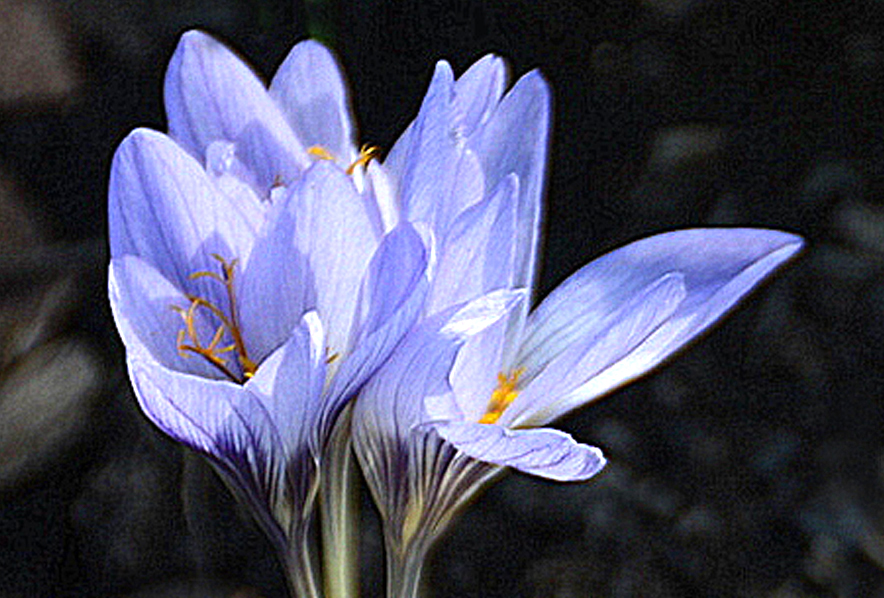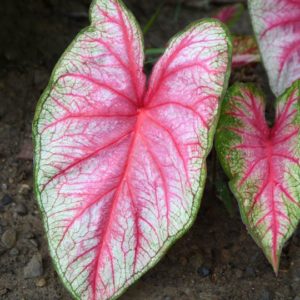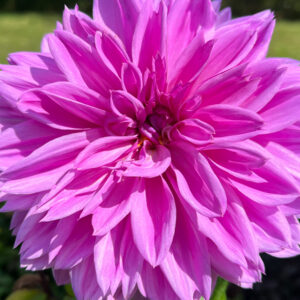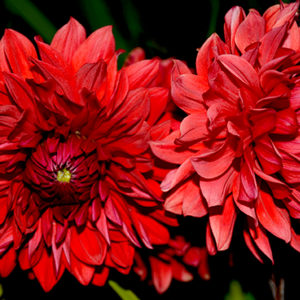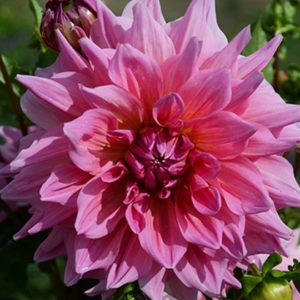Description
 Crocus,
Crocus,
Saffron
Saffron is considered the most expensive spice on the planet. The use of saffron dates back to the very beginnings of civilization when, even then, it was regarded as a rare and luxurious item.
It is grown for the bright yellow pollen that covers the stamens at the center of each blossom. This bright yellow dust is an extraordinary coloring agent for food and material. The Greeks and Chinese died fabric only worn by their royalty with saffron. The spice also has a very mild, pleasant flavor, but it is mostly coveted for its coloring ability.
You are not going to get a lot of saffron from a package of bulbs. Each bulb will produce 2-5 stamen (stigmata). When dried the stigmata are called threads.
It takes at least 2-3 threads to color a pan of rice. It takes 35,000 bulbs to produce a pound of saffron. It would take 1100 bulbs to produce a half ounce of saffron – the amount one cook would probably use in a year if they cooked with saffron frequently.
Saffron Crocus is produced from a corm. Corms are actually the storage part of a swollen stem that produces flowers and leaves. A corm is shaped like a flattened disk. The top is flat and the bottom, known as the basal plate, is slightly concave. As the plant begins to grow, the top swells and from the center emerges a new stem. The
You are not going to get a lot of saffron from a package of bulbs. Each bulb will produce 2-5 stamen (stigmata). When dried the stigmata are called threads.
It takes at least 2-3 threads to color a pan of rice. It takes 35,000 bulbs to produce a pound of saffron. It would take 1100 bulbs to produce a half ounce of saffron – the amount one cook would probably use in a year if they cooked with saffron frequently.
Saffron Crocus is produced from a corm. Corms are actually the storage part of a swollen stem that produces flowers and leaves. A corm is shaped like a flattened disk. The top is flat and the bottom, known as the basal plate, is slightly concave. As the plant begins to grow, the top swells and from the center emerges a new stem. The original corm dies, but a new corm forms on top of the old corm.
From the basal plate (bottom) of the new corm develop tiny new corms which are called cormels. Saffron corms are incredibly prolific. A single corm, in the course of one year can produce 4+ fully developed cormels as you can see from the photo below.
This crocus WILL NOT grow in Hardiness Zones 1-3, but it flourishes in Hardiness Zones 5-10. It is somewhat temperamental in Zone 4, but often grows there as well.
It is the saffron crocus (Crocus sativus) that has been cultivated for centuries to produce the spice crop. It produces more stamen than the Wild Saffron Crocus and that is why it is preferred over the wild type. Crocus sativus is sterile. The only way it reproduces is by cloning and this is accomplished through the production of cormels.
The stamen of Crocus sativus are also known as stigmata. Saffron’s dark orange stigmata, when dried, are called threads. These threads add a rich, briny flavor and a bright yellow color to foods.
Saffron has always been a key spice in bouillabaisse, paella, cookies, breads, cakes and the cooking of the East Indian, Middle Eastern and North African cultures. The spice enhances the flavors of mild cheeses, eggs, lamb, rice, fish, shellfish, poultry, pork, duck, cream, corn, sweet peppers, onions, shallots, garlic and oranges.
You must plant them as soon as possible, and they will bloom this fall. Let me repeat: THE BULBS WILL BLOOM THIS FALL AND YOU CAN HARVEST THE STAMEN THIS FALL.
Planting Saffron Crocus in Containers
Saffron plants are not deerproof, so consider growing them in containers where they do very well. Use the soil mix described in the Harvesting History YouTube Video
The Best Soil Mix for Containers
Briefly the soil mix is 60% topsoil, 20% peat moss and 20% compost or dehydrated cow manure.
Our package of Saffron Crocus contains 15 corms. These 15 corms will fill an 8-10 inch container. Make sure to add 1 cup of bone meal and ½ cup of a high potassium fertilizer like 2-2-6 or 5-5-10 to the soil before planting the corms. Plant the corms 6+ inches deep and 1 inch apart. Water heavily and keep the soil slightly moist, not soaking wet.
Saffron Crocus corms need a period of dryness throughout the summer and they need full sun. If they do not receive full sun, they will not bloom. Every fall and spring the pot should be fertilized with the same high potassium fertilizer. The pot should be stored over the winter in an unheated garage (for Hardiness Zones 4-5) or outside (for Hardiness Zones 6-8) and should not be watered if kept inside. For pots kept inside, bring the pots outside about 4 weeks before the last frost date.
Planting FALL BLOOMING Bulbs for Glorious FALL Color
Bulbs are some of the easiest plants to grow. Fundamentally the process requires four steps.
- Dig a hole.
- Dust the hole with bonemeal.
- Place the bulb in the hole.
- Fill the hole with soil.
There are, however, some additional refinements which help produce even more lavish results and enhance protection from critters.
First, bulbs can and should be planted deeper than the instructions you receive on the package labels. An easy way to remember how deep to plant the bulb is to think of a quarter. If the bulb you are planting has the same diameter as a quarter or less, plant the bulb 4 inches deep. If the bulb is broader than a quarter, plant it 6-10 inches deep. Large bulbs like some alliums, camassias, standard tulips and fritillaries can easily be planted 10 inches deep. As the soil compacts days, weeks and months after planting, it produces a thinner layer of soil on top of the bulb. Planting bulbs deep helps with critter control. Moles, voles, chipmunks and squirrels are lazy little creatures, and they don’t like doing a lot of digging to reach their food.
Second, bonemeal is a must. It is an excellent source of calcium and phosphorus which help the bulbs to form a strong root system and healthy stems. For large bulbs (those bigger than a quarter), use ¼ cup per bulb. For small bulbs, dust the entire surface or hole where the bulbs will reside.
Third, small bulbs should be planted in clusters of 10 or more – 1 inch apart. Large bulbs, like allium, can stand along, but create a much more pleasing presence in the garden when planted is clusters of 3-5. They should be separated by no more than 4-6 inches.
Fourth, bulbs usually multiply fairly quickly and once crowded will not produce blossoms. Plan to divide your bulbs in mid-summer to fall when the top growth has dried out.
These simple, easy, quick tasks are all that is required to produce a lovely bulb display year after year,

